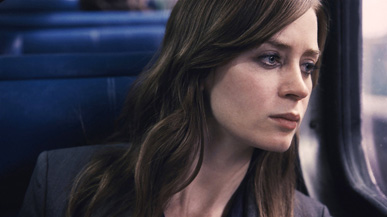The 400-Word Review: The Girl on the Train
By Sean Collier
October 12, 2016
BoxOfficeProphets.com

Perhaps the book is much better than the film; perhaps it provides ample motivation for the movements of its plot and maintains a structure and narrative coherence throughout. That can’t be said for the film, which displays dizzying shifts in perspective and can’t follow its own schematic rules for even half an hour — when it’s not ignoring its own plot threads.
But if you don’t actually think about any of that, it’s an enjoyable enough film.
In the aftermath of infidelity and divorce, Rachel (Emily Blunt) is struggling with alcohol and depression. Every day, she rides a commuter train past her former home — where her ex-husband (Justin Theroux) and his new wife (Rebecca Ferguson) are living in apparent domestic bliss — but it is the couple two doors down on whom she’s fixating. Megan (Haley Bennett) and Scott (Luke Evans) are forever cuddling in plain view of the train tracks, and Rachel can’t help but see in them everything she’s lost.
When she spies Megan apparently embracing another man, however, Rachel descends into a drunken desperation, disembarking her train to confront the young stranger. After blacking out, however, she can’t remember what transpired — and she quickly learns that Megan has gone missing.
With little scrutiny, the unreliable-narrator whodunit is watchable and breezy. Girl on the Train’s greatest strength is its game cast, particularly Emily Blunt — still among the most underrated performers in Hollywood — as Rachel, a badly broken person who can no longer trust herself or anyone else. And while many of the story’s themes and ideas are downplayed or outright discarded here, a few worthy ideas are explored in a way that at least feels fresh.
After consideration, though, Girl on the Train reveals its many faults. A narrative structure presumably established by the book dictates a shifting perspective, with the three women trading narrative duties; the script, from Erin Cressida Wilson, can’t manage to maintain that, briefly dallying with shifting voices early on before giving up within the first half-hour. For simplicity’s sake, vital aspects of the story are rushed past or downplayed, leaving unanswered questions.
It’s not a bad movie, but it’s positively not the movie it wants to be. Which is Gone Girl.
My Rating: 6/10
Sean Collier is the Associate Editor of Pittsburgh Magazine and a member of the Broadcast Film Critics Association. Read more from Sean at pittsburghmagazine.com/afterdark